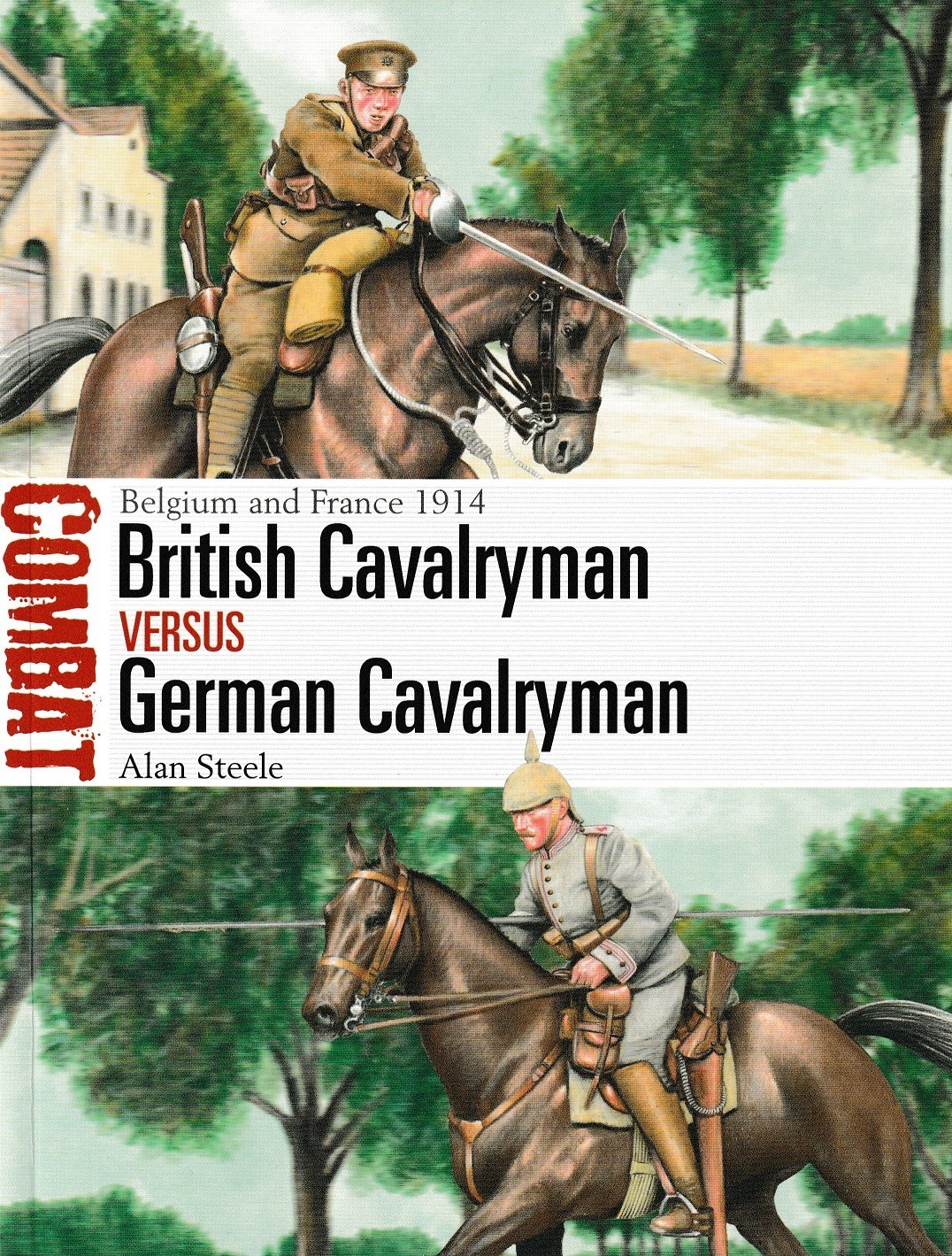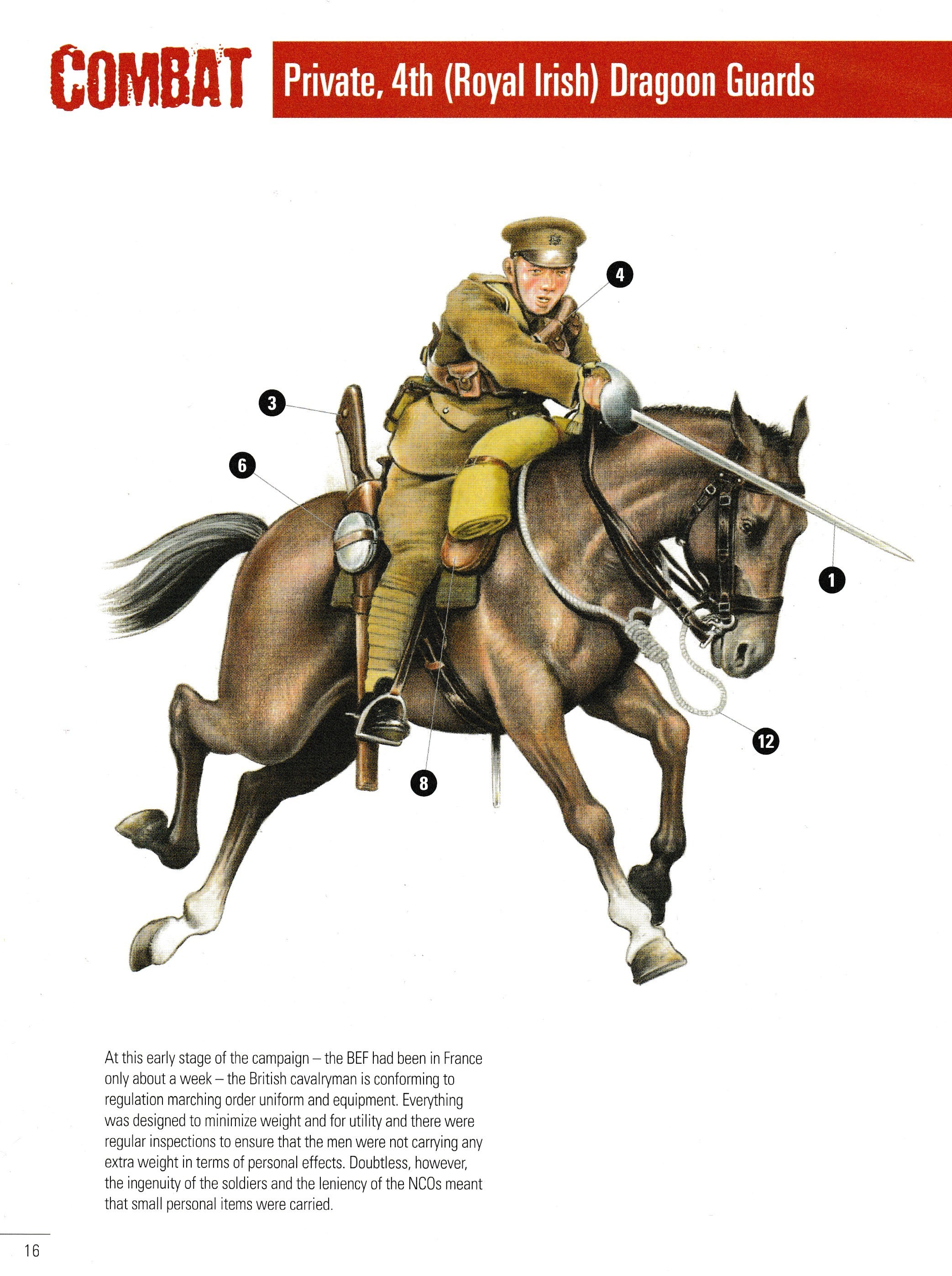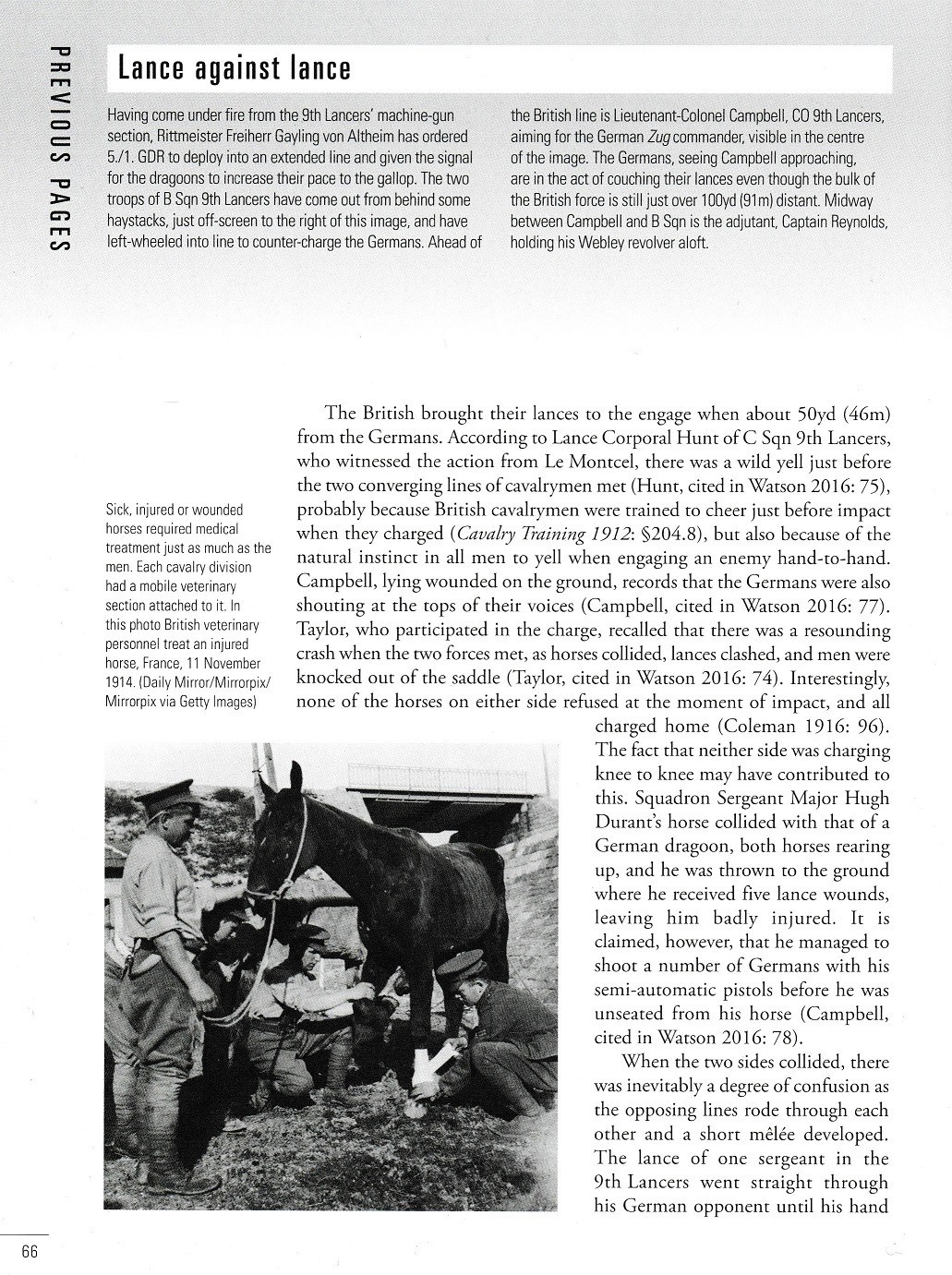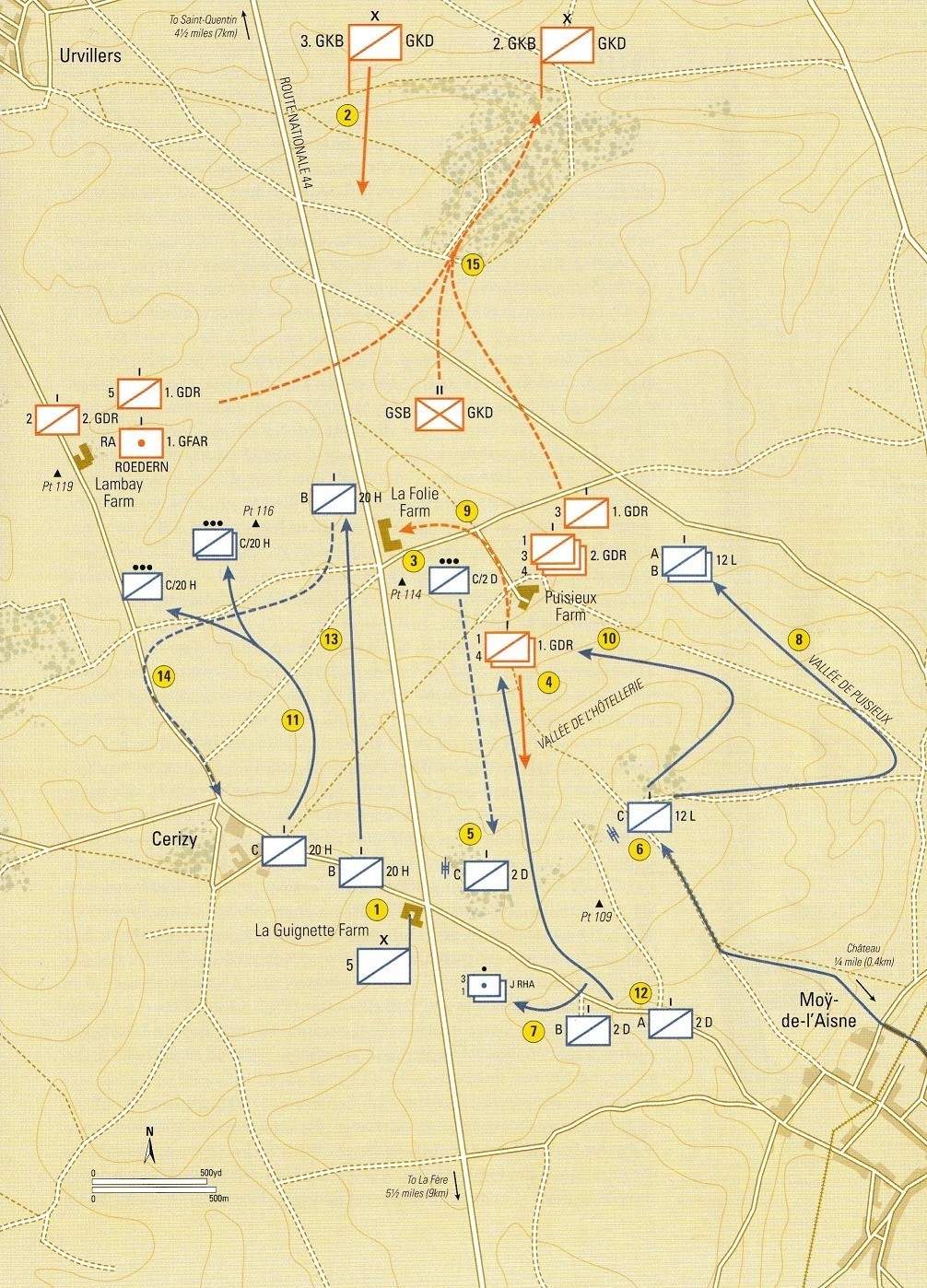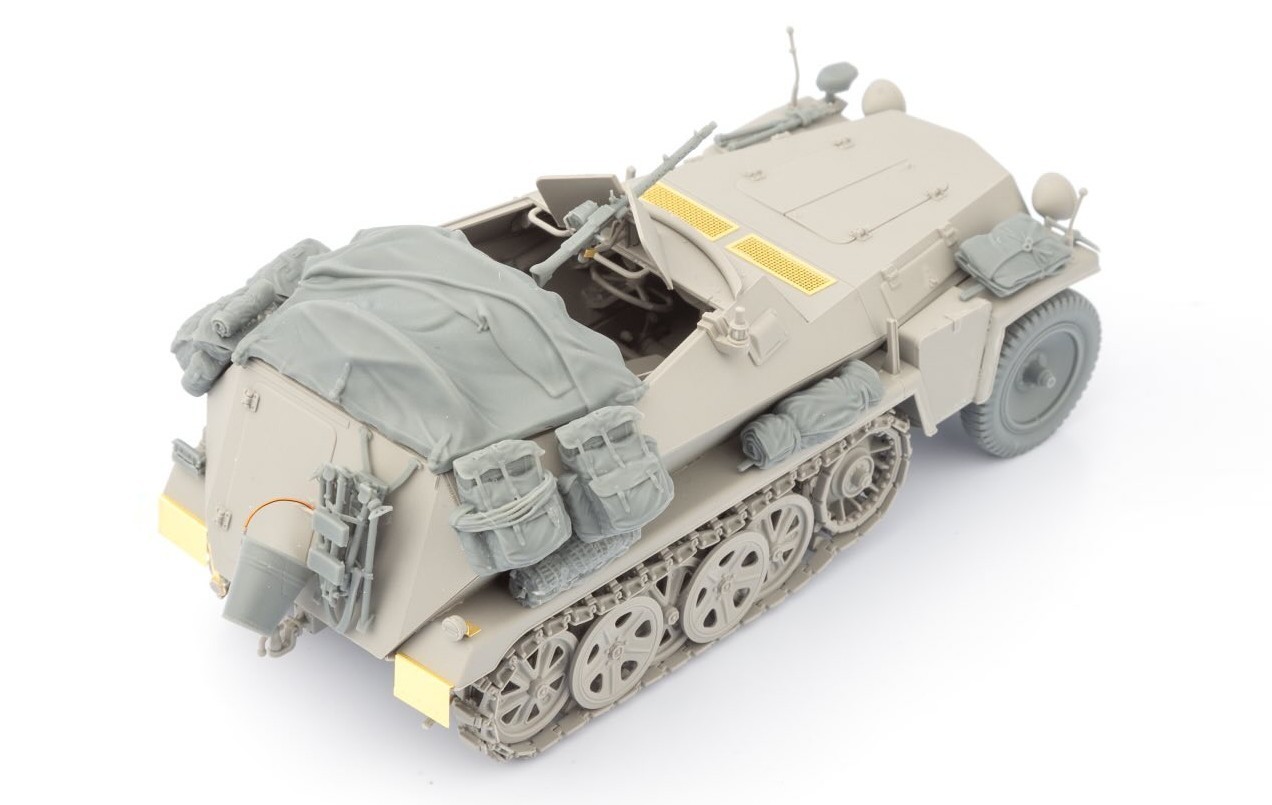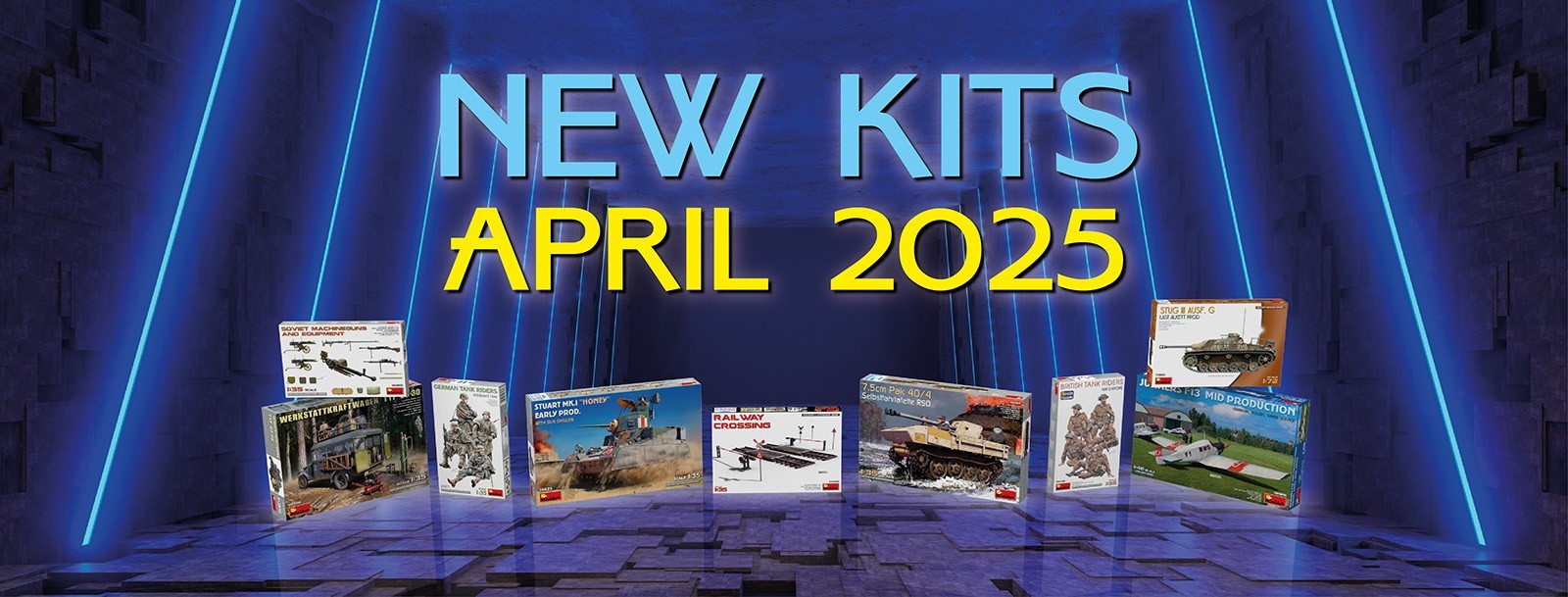HISTORY:
** In the early months of World War One, before the fighting degenerated into static trench warfare, there was a brief period of mobile combat as the German army advanced through Belgium and northern France, compelling the French and British forces to retreat. Both sides in the escalating conflict deployed substantial numbers of Cavalry units to screen their infantry forces, conduct reconnaissance and harness their superior mobility to undertake aggressive combat operations. In the summer of 1914, the British Cavalry had the difficult role of covering the withdrawal of the British Expeditionary force, and the German Cavalry the equally demanding task- after weeks of combat and forced marches- of maintaining contact with a rapidly retiring enemy. In this study, carefully chosen photographs and specially commissioned artwork and maps complement an even-handed assessment of each side doctrine, organization, equipment and training, followed by a detailed analysis of their actual performance in the three key actions of 1914: Casteau (22 August), Cérizy-Moÿ (28 August) and Le Montcel (7 September). **
** Quoted from the back cover of the book.
THE BOOK:
Osprey Publications has released British Cavalryman vs German Cavalryman – Belgium and France 1914 as Number 66 in the Combat series. It is an 80-page soft cover book. Included with the text are black and white and color photographs, color illustrations, detailed captions, maps, profiles and more. It has a 2022 copyright, a publication date of August 16, 2022, and the ISBN is 978-1-4728- 4882-6.
THE CONTENTS:
- Introduction
- The Opposing Sides
- Origins and recruitment
- Weapons and tactics
- Training, Mobilization, Logistics and morale
- Casteau
- 22 August 1915
- Cerizy- Moÿ
- 28 August 1914
- Le Montcel
- 7 September 1914
- Analysis
- Casteau
- Cerizy- Moÿ
- Le Montcel
- Aftermath
- Unit Organizations
- Bibliography
- Index
THE TEXT:
Author Alan Steele provides a well written text detailing the combat between British cavalrymen and German cavalrymen during the first year of World War I in the countries of Belgium and France during 1914. The text goes into great detail in all areas of the book as outlined on the contents page, please refer to the contents listing that I have provided for the areas that are covered through the book. The three conflicts listed are greatly detailed with information provided on specific military units and their movements and actions, locations, times of specific incidents, actions of specific individuals including whether they were wounded or killed, successful actions, actions that failed, weaponry used, and such other informative information that the reader would expect to find in a well written historical publication. I personally feel that Alan Steele has covered all areas and aspects of the specified conflicts and left no area of it undiscussed and detailed. The text in the book is nicely written and well detailed in an easy-to-read format which the detailed oriented reader will benefit from. As I read through the text, I didn’t notice any spelling or grammatical errors. Grammar and spelling might not be an important factor to everyone however it is something that I take notice of and pass on my findings. I feel that if the text is well written then it shows that the author has taken the time to be professional with their writing. Anyone wanting to add an excellent reference and history book on the British cavalry, the German cavalry and cavalry warfare during World War I to their personal library will be pleased with this informative and interesting book.
THE PHOTOGRAPHS:
A total of 42 black and white photographs and 9 color photographs are included in this volume. The photographs range from wide angle photographs to close-up detailed photographs. They contain a combination of in-action photographs to photographs that have been staged for the photographer. The majority of the photographs are clear and easily viewable; however, a few have an out of focus look to them and some appear to be too dark, and others appear too light. This is typical for the discussed period of history and consideration needs to be given to the fact that some of the photographs are over one hundred years old and the quality of the photographs is of no fault of the author and do not take anything away from the book. Author Alan Steele stuck to the title of the book and chose subject specific photographs and did not include photographs that strayed from the main subject of the book. The majority, if not all, of the photographs will prove to be a wealth of information to anyone interested in the British cavalry, the German cavalry and cavalry warfare during World War I due to the details they contain.
THE ILLUSTRATIONS:
There are four color illustrations by illustrator Raffaele Ruggeri provided in this volume. One of the color illustrations is accompanied by black and white copies of the same illustration that describe the scenes and point out and describe key areas of interest. The illustrations are very well done, nicely detailed and are of:
Plate A
Kürassier, Kürassier – Regiment 4 - Casteau, 22 August 1914 (See attached scan)
- Two-page front and back illustrations, of a German cavalryman mounted on a horse. Accompanying the illustrations is a well written caption that details and points out fourteen items of interest such as weapons, dress, and other items of the period.
Plate B
Private, 4th (Royal Irish) Dragoon Guards – Casteau, 22 August 1914 (See attached scan)
- Two-page front and back illustrations of a British cavalryman mounted on a horse. Accompanying the illustrations is a well written caption that details and points out thirteen items of interest such as weapons, dress, and other items of the period.
Plate C
Surprise
- A two-page split-page action illustration showing the dismounted German Dragoon’s point of view of the attacking British mounted cavalry in the top illustration and the British cavalry’s point-of-view in the bottom illustration. The illustrations come with smaller black and white copies of the same illustrations on the following page with detailed captions that describe the scenes and point out and describe key areas of interest.
Plate D
Lance against lance
- A two-page action illustration showing the mounted German cavalry’s point of view as they gallop forward to meeting a line of charging mounted British cavalry. On the following page there is a well detailed caption explaining what is taking place in the illustration as well as pointing out key individuals shown.
THE CAPTIONS:
The captions are well written and explain the accompanying photographs and illustrations in great detail eliminating any doubt as to what is shown. The captions go into very specific detail as to the specific weapons shown, military units, associated equipment carried and used, specific items of interest shown, dates and locations and other such pertinent information. As I read through the captions, I didn’t notice any spelling or grammatical errors. Alan Steele’s captions will be helpful to the reader due to their detailed content as opposed to other author’s captions that I have seen that are very brief and lacking in detail.
PROFILES:
There 2 individuals profiled in this volume, and they are:
- Hubertus von Gebler
- Hubertus von Gebler (3 November 1863 – 1 February 1934) was a German officer that rose through the ranks of the Imperial German Army and as a Major was appointed to the command of the 2. Garde-Dragoner-Regiment, leading his unit to war in 1914.
- Frank Wormald
- Brigadier-General Frank Wormald, CB (10 February 1868 − 3 October 1915) was a British Army general. He served in the Second Boer War and the First World War where he held the command of the 5th Cavalry Brigade.
MAPS:
There are 4 color maps included in this volume that are accompanied by well written captions and detailed keys that point out specific locations as well as movements and actions by both sides during each conflict.
The maps are of:
- War of movement on the Western Front, August-September 1914
- Casteau, 21-22 August 1914
- Cerizy-Moÿ, 28 August 1914 (See attached scan)
- Le Montcel, 7 September 1914
INFORMATIONAL CHARTS:
There are 3 informational charts included in this volume and they provide information on the following:
- Key to military symbols
- Key to unit identification
- A chart showing 6 different cavalry movement formations
Osprey Publishing also offers Combat – British Cavalryman vs German Cavalryman – Belgium and France 1914 as:
eBook (PDF) ISBN: 978-1-4728- 4879-6
and
eBook (Epub & Mobi) ISBN: 978-1-4728- 4881-9
Osprey Publishing’s, Combat – British Cavalryman vs German Cavalryman – Belgium and France 1914, is also available as an electronic Kindle version through Amazon.com.
PRICE:
UK £14.99 / US $22.00 / CAN $29.00
This book was provided to me by Osprey Publishing. Please mention that you saw the book reviewed here on the KitMaker Network when you make your purchase. Thank you.
